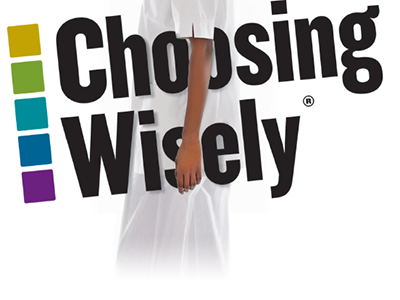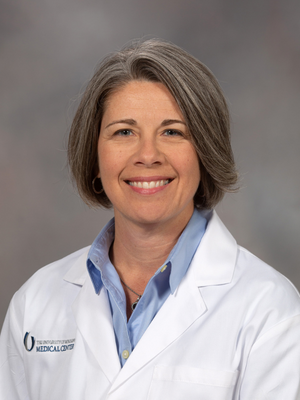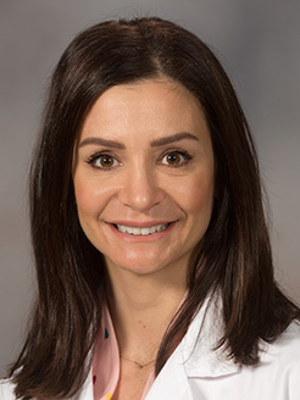Otolaryngology team's wise blood calcium protocol earns national award

A new protocol for measuring blood calcium levels in post-thyroid removal patients developed by a team in the Department of Otolaryngology at the University of Mississippi Medical Center has reduced the number of tests, decreased operating room time and allowed patients to be safely discharged more quickly.
More than two years after the protocol was implemented at UMMC, none of the post-thyroidectomy patients have been readmitted to the hospital or have returned to the Emergency Department for issues related to low blood calcium.

That success has prompted the American Society for Clinical Pathology to present its 2017 Choosing Wisely Champion Award to Dr. Lana Jackson, associate professor of otolaryngology and communicative sciences and leader of the team that developed the protocol.
“With surgeries like this, you want to transition patients home as quickly as possible,” Jackson said. “Everybody wants to do that safely. Reducing the number of tests, provided the risk is low, just helps the patients get back ambulatory in their own homes rather than having to wait in the hospital.
“Choosing Wisely heavily promotes reducing costs and improving communication and patient safety. It’s about being good stewards of your resources.”
According to Jackson, the entire body’s blood calcium level is regulated by four small glands – called parathyroid glands – located near the larger thyroid gland. She said a challenge of thyroid removal is not to inadvertently extract these glands or interrupt blood flow to them. Decreased blood calcium levels could cause tingling in the lips, hands and feet, weakness, muscle spasms and, rarely, an irregular heartbeat.
Surgeons order tests after thyroidectomy surgery to determine whether these glands are functioning correctly. There has been no set standard for determining which tests are needed and exactly when they are to be administered. There has even been a discrepancy as to when the patients should be discharged home.
“Multiple surgeons doing thyroid surgery in the department were all trained at different places, which is common,” Jackson said. “Because of the variations, we wanted to find out if there was a way to streamline the process and still keep patients safe.”
Jackson’s team looked at the ordering practice patterns of physicians doing thyroidectomies, performed a review in Epic, the Medical Center’s electronic health record, and discovered the methods were all over the board.

“If everybody is doing it a different way, they may be all doing it correctly, but they may not all be doing it in the best, most efficient way,” said Dr. Alexandra Brown, associate professor of otolaryngology and part of Jackson’s team. “Even the same surgeon would have different ordering patterns for the same patient. It was clearly not the most efficient.”
The team reviewed five years of patient records to consider what information was really needed, which labs were appropriate and when it would be safe for thyroidectomy patients to be discharged home. It looked at what other institutions were doing and what might be best practices for the department.
Jackson determined a simple lab draw to look at the parathyroid level within 30 minutes of surgery would provide an adequate measure of blood calcium. That reading would determine what medication was needed at discharge and whether additional tests might be needed.
“All (post-thyroidectomy) patients are discharged on calcium supplements that taper in three weeks, but the dosage amount and whether another medication could be added was determined by that draw,” Jackson said. “We figured out what the cutoff should be: If there was a parathyroid hormone level less than 12, the patient would be sent home with the calcium taper plus a Vitamin D supplement; if the parathyroid hormone was more than 12, they would go home without the Vitamin D.”
Jackson and her team presented its findings at a faculty meeting and received an affirmative response.
“I think they were surprised, but they were very open to seeing that it wasn’t necessarily the best practice,” Jackson recalled. “Our faculty was really gung-ho about it and wanted to know how we could make this better. It was very nice.”
Since the protocol has been implemented, there has been a marked decrease in test usage, more patients have been discharged earlier in the day, and patients have spent less time in the operating room. The success of the protocol “really put the providers at ease,” Brown said.
Many other health care institutions have asked for the new method and the team is in the process of writing its protocol for publication. And the protocol is now in use for parathyroidectomy surgery patients, with the same safety results.
“Most of these patients are going home within 24 hours,” said Brianne Pardo, project manager in otolaryngology.
The fact that a minimum number of post-thyroidectomy patients register a parathyroid hormone less than 12 presents the next question for Jackson’s team: Does there need to be a lab draw at all?
“We’ve got it down now where these patients really have a minimum risk,” she said.


